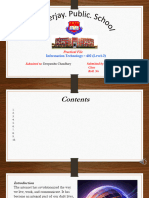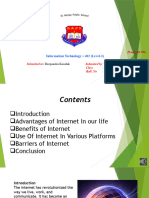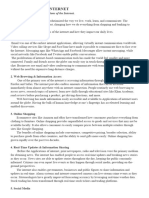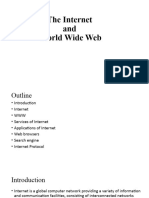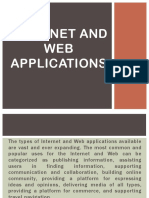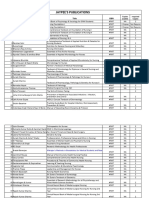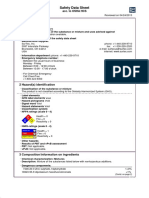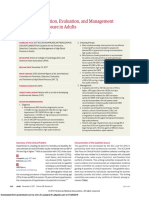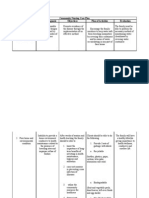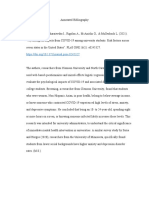0% found this document useful (0 votes)
48 views20 pagesInternet & E-Security
The document discusses the various uses of the Internet. It begins by explaining what the Internet is and how it connects devices globally through a series of networks. It then outlines 9 major uses of the Internet: 1) communication through tools like email and social media, 2) e-commerce through online shopping and payments, 3) content creation using AI, 4) online banking, 5) education through online courses and libraries, 6) entertainment through streaming, gaming, and social media, 7) access to government websites, 8) health and wellness applications, and 9) online ticket booking.
Uploaded by
Shubham SwamiCopyright
© © All Rights Reserved
We take content rights seriously. If you suspect this is your content, claim it here.
Available Formats
Download as PDF, TXT or read online on Scribd
0% found this document useful (0 votes)
48 views20 pagesInternet & E-Security
The document discusses the various uses of the Internet. It begins by explaining what the Internet is and how it connects devices globally through a series of networks. It then outlines 9 major uses of the Internet: 1) communication through tools like email and social media, 2) e-commerce through online shopping and payments, 3) content creation using AI, 4) online banking, 5) education through online courses and libraries, 6) entertainment through streaming, gaming, and social media, 7) access to government websites, 8) health and wellness applications, and 9) online ticket booking.
Uploaded by
Shubham SwamiCopyright
© © All Rights Reserved
We take content rights seriously. If you suspect this is your content, claim it here.
Available Formats
Download as PDF, TXT or read online on Scribd
/ 20


